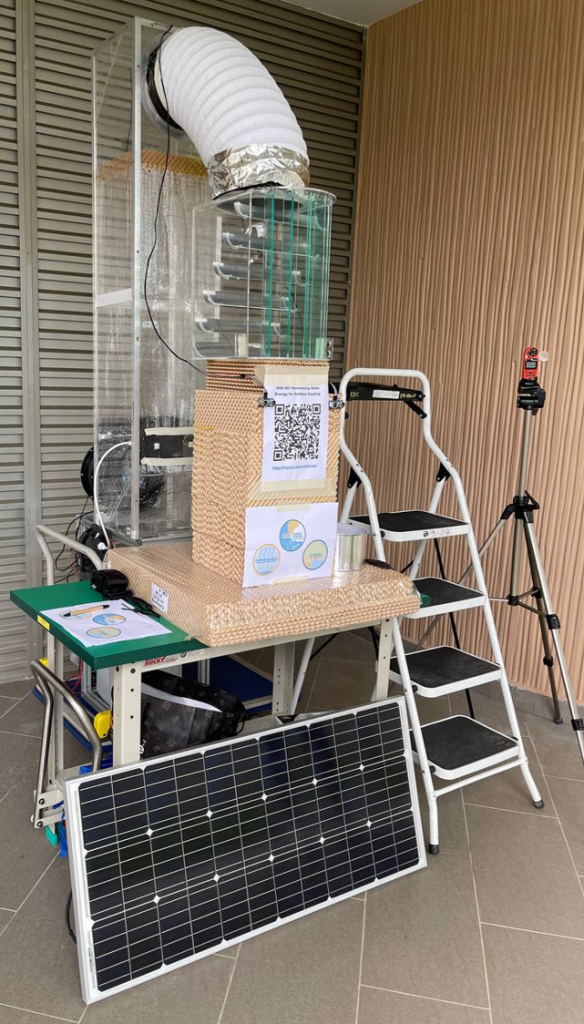Sol-Cool: Solar-Powered Evaporative Cooling

Project Motivation
Singapore is heating up twice as fast as the rest of the world (0.25°C per decade), due to the Urban Heat Island effect and Global Warming. Without any mitigation, there is an expected rise in thermal discomfort and heat-related health problems (e.g., heat stress), especially for people outdoors. People most affected by the rise in temperature are those who rely on public transport for their daily commutes. Bus stops in particular have a hot and humid microclimate which exacerbates thermal discomfort. Current methods to mitigate these issues include the installation of fans at bus stops. Ironically, these solutions lead to an increase in greenhouse gas emissions due to them relying on the burning of fossil fuel for power. These greenhouse gasses intensify both the Urban Heat Island effect and Global Warming, forming a vicious cycle of thermal discomfort. These factors highlight the pressing need for a sustainable approach to cool people outdoors without further exacerbating these negative phenomena. From background research, outdoor thermal comfort in Singapore is optimized at an ambient air temperature of 28.1°C and corresponding wind speed of 1.5m/s. Hence, the project aims to design a sustainable means to improve thermal comfort of commuters at bus stops by drawing on solar energy.
Design
The solution, Sol-Cool, is a solar powered evaporative cooler. Sol-Cool comprises three main components: the evaporative tower, the air distribution system, and the solar power supply components. It is designed to fit within existing bus stop with the main components housed behind the signboards or on the bus stop roof.

The evaporative tower produces cool air through evaporative cooling. Inlet fans take in warm ambient air (from behind the signboards) and is cooled by evaporative cooling by passing through a water mist. The cooled air and water mixture then passes through an evaporative pad to remove stray water droplets to be reused. The system to distribute the cooled air to commuters consists of an air duct and a diffuser. Cool air generated from the evaporative tower is channelled into the diffuser via the duct. The diffuser evenly distributes the air to commuters with the help of turning vanes and carefully designed fins. A solar power system consisting of the solar panels, solar charge controller and the solar battery was tested to determine the feasibility of powering Sol-Cool entirely via solar. An electrical system was also implemented to control Sol-Cool’s operations depending on the time and ambient conditions which were monitored using sensors.
From the user tests, 80% of participants felt cooler overall after using Sol-Cool. The test highlighted the potential for sustainable cooling solutions in achieving satisfactory thermal comfort conditions for residents in Singapore.
Project Team
Students:
- Arunima Agrawal (Mechanical Engineering, Class of 2021)
- Chang Qi Song, Jared (Mechanical Engineering, Class of 2021)
- Cho Yen Wee (Electrical Engineering, Class of 2021)
- Muhammad Faris Bin Azzli (Mechanical Engineering, Class of 2021)
Supervisors:
- Elliot Law (elliot.law@nus.edu.sg)
- Wong Kah Wei (clbwkw@nus.edu.sg)

